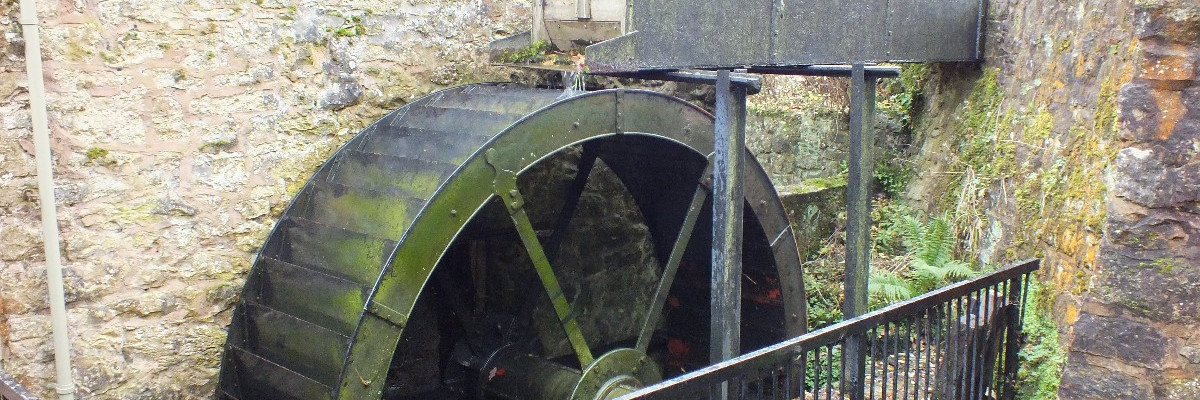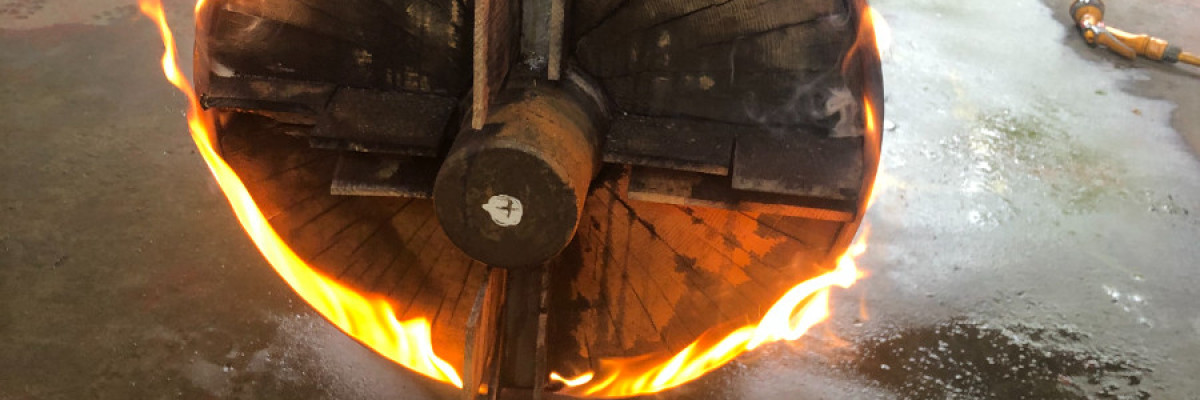Watermill restoration and maintenance with comprehensive millwright engineering services
Hydro power is hardly a modern renewable power source ... in many ways it was the original power behind the Industrial Revolution!
Projects include waterwheels and turbines, sails/sweeps and stocks, mill shafting, gears and bearings, metal and timber Hurst frames, millstone reassembly, installation and dressing, vats, horses, hoppers, shoes, damsels, sluicegates and debris gratings, metal and timber bridges, culverts and watercourses, lightning conductors, electric drives and water recirculation systems.
In total, our team of traditional millwrights has worked on more than 150 windmill and watermill restoration projects around the UK, delivering millwright services including:
- Survey and feasibility studies
- Project supervision and management
- Technical drawings and photography
- Paint analysis
- Pattern marking, carpentry and joinery
- Blacksmithing and hot-set riveting
- Fabrication and welding
- Machining
- Surface preparation by vortex, dry and wet blasting
- Application of traditional and modern paint systems
- Millstone manufacture and dressing
- Leaded glazing
Traditional Millwrights – Modern and yesteryear
For hundreds of years, the millwright was deemed to be a knowledgeable person with skills in blacksmithing, lathe work and carpentry, as well as fitter and erector. Assuming the ultimate authority, in wind and water power for manufacturing purposes, the traditional millwright was essentially an itinerant engineer and mechanic - a real jack of all trades.
Responsible for the whole engineering process, from drawing up plans to creating conduits or watercourses, the millwright's skillset was vast, executing equal precision and skill with hammer, axe or plane along with mechanical mathematics. Velocity, strength, power and geometric calculations were all tools under the belt, works now carried out by a civil engineer.
In the early years of millwrights, all the mill machinery was operated by gears made of wood. Water directed over hand-built wooden mill wheels would turn the gears and generate power whilst drive belts were made of rope and later leather.
It was the industrial revolution that changed the once all-encompassing role of the millwright for good. Innovations in steam engine power opened up new doors in industry and shaped manufacturing processes in the 19th century and beyond. New trades were created and manufacturing and processing were no longer dependent solely on water power.
Despite the revolution leading to a greater demand for watermills and windmill work, the profession was lowered in many ways to that of a commonplace mechanic. Mill machinery more often became belt-driven and the original wooden water wheels, gears, bearings and shafts all gave way to replacement metal components.
The new technology no longer required the work of a millwright in its traditional sense. As power generation became all the more complex and as such, the work surrounding the construction and maintenance of these industrious machines became increasingly specialised new trades came about; fitters and turners, machine makers and mechanical engineers were required to do the work.
The new role, was primarily to execute the plans of the engineer called on for finishing works and minor mechanical engineering. That being said, they still needed to have a broad base of technical knowledge. He was responsible for calculations of force, material strength, understanding electricity and constructing with metal. This role was becoming more in line with that of today’s millwright.
Modern millwright services demand both precision and skill. Fitting of machinery in mills today requires engineering precision fitting to the smallest of tolerances.
Nowadays, the millwright is concerned with the installations and alignments of heavy industrial machinery and ensures their effective operation, not forgetting the maintenance, repairs, modifications and restoration of this machinery both historic and relatively new in design.

















